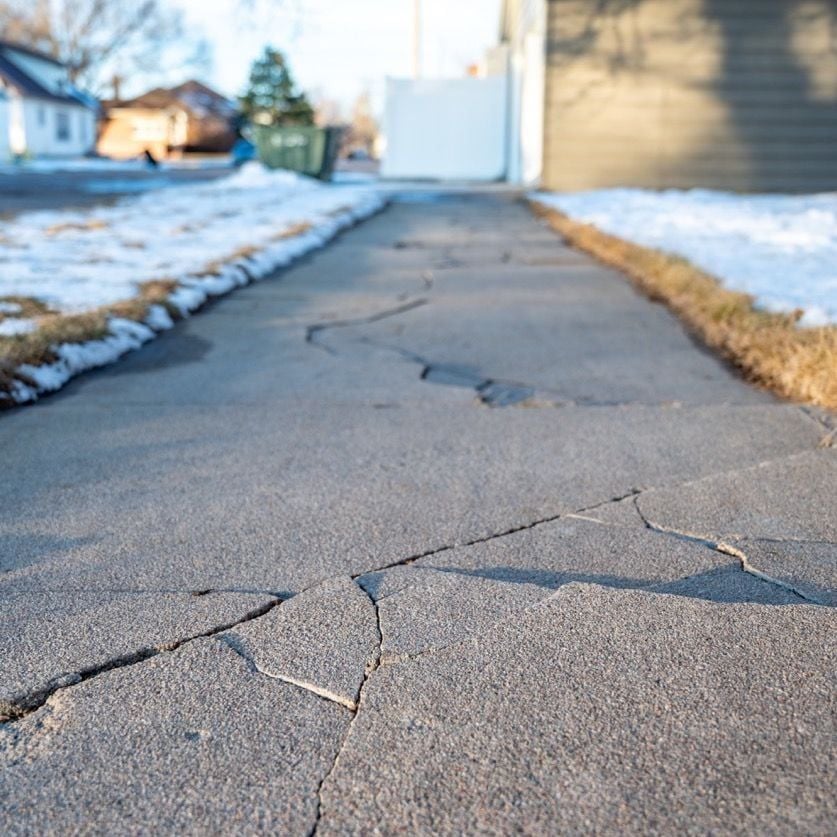
Concrete cracking is a very common occurrence that can be caused by many different factors.
If your concrete is developing cracks, you’re not alone. While no property owner likes the idea of their concrete cracking, the truth is that it’s a very common occurrence that can be caused by many different factors.
Here at A-1 Concrete Leveling, we’ve been in the business of lifting settled slabs and repairing cracked concrete for over 30 years, and throughout this time we’ve gotten very familiar with the reasons behind why concrete cracks.
This article will walk you through the causes of concrete cracking and explain what you can do to prevent further damage if you do find your concrete slabs are developing cracks.
Freeze-Thaw Cycles
Concrete is a porous material that easily absorbs water. When temperatures dip below freezing, it causes the water that’s been absorbed into the concrete pores to expand and pop.
As the temperature rises and the water thaws, it leaves behind surface damage and cracking where the internal expansion took place. This creates even more surface area for the concrete to absorb water and cause damage the next time the water freezes and expands.
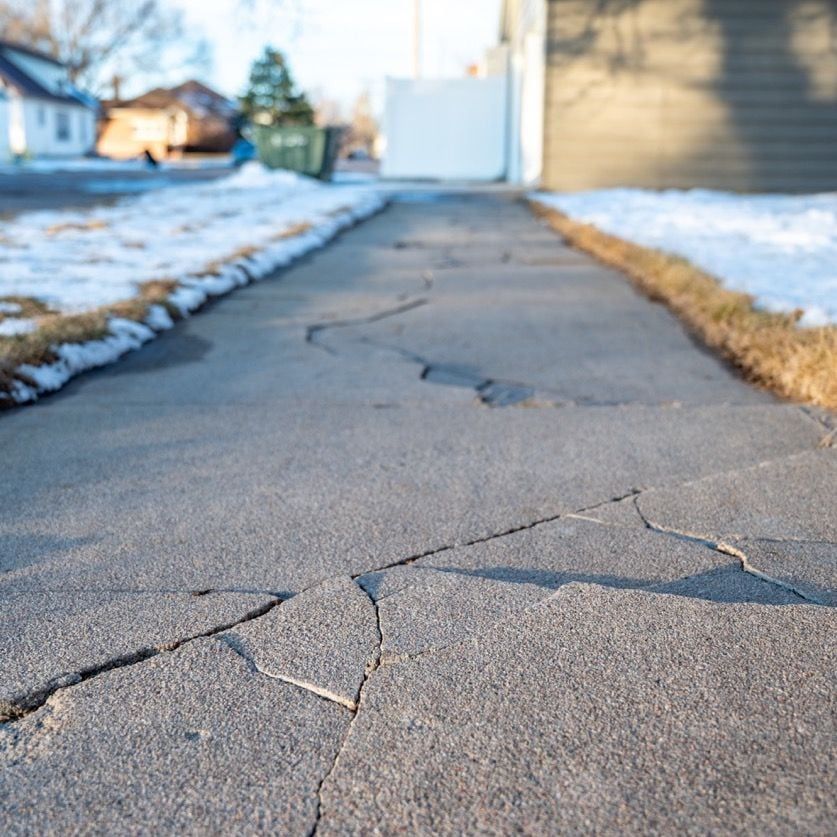
Cracking due to freeze-thaw cycles is very common, although treating the concrete with a high-quality penetrating sealer can prevent water from being absorbed into the concrete in the first place, reducing the likelihood of cracking due to freeze-thaw cycles.
Not Enough Joints
In order to avoid or reduce cracking, special joints are installed in strategic locations around large areas of concrete, like patios, driveways, and walkways.
Control joints are put in place to act as a guide to control where the concrete will crack. Instead of creating a visible crack on the surface of the concrete slab, control joints help concrete crack along the straight valley of the joint.
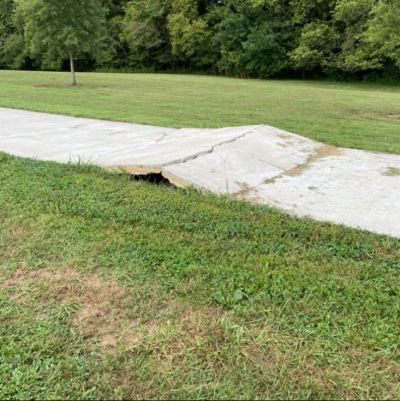
Expansion joints are spaces between two concrete slabs that allow them to move freely from one another. Without expansion joints, the constrained movement of the concrete could cause it to crack.
If these joints are not properly spaced or there aren’t enough of them throughout the concrete, the slabs will likely end up cracking.
Related Resource: Should You Caulk Control and Expansion Joints?
Settling
Concrete can settle naturally over time due to soil compaction, water erosion, pests making a home under the slab, and more.
All concrete settling is caused by the base of the concrete eroding away or compacting down, and as this process occurs, it causes strain or pressure on the slab, which can cause it to crack.
If you notice that your concrete slabs are beginning to sink, it’s important to get them lifted up as soon as possible. As the slab settles further, there’s more pressure placed on the concrete, which can end in worse cracks.
Voids
Empty spaces or voids under your concrete slabs can make them weak and prone to cracking where the slab is unsupported.
Oftentimes voids will form where a concrete slab is rebarred into a nearby structure, like a porch, house foundation, or adjoining slab. Voids can also form in seemingly random places under the slab, and you may not always be able to see them.
As the base where the concrete was once supported erodes away, you can be left with an unstable slab that may crack where it’s not held up. Filling these voids as soon as possible after becoming aware of them can help stabilize them and reduce the chances of the concrete cracking.
Trauma
Heavy equipment and machinery driving or parked on your concrete can cause trauma to occur, which usually involves large, intense cracks.
Residential concrete, like what’s used for driveways, is not created to withstand the weight of heavy equipment like dumpsters, large trucks, tree removal machines, etc.
Under the weight of heavy equipment, your concrete can get crushed, crack, or become weakened without any immediate visual cues.
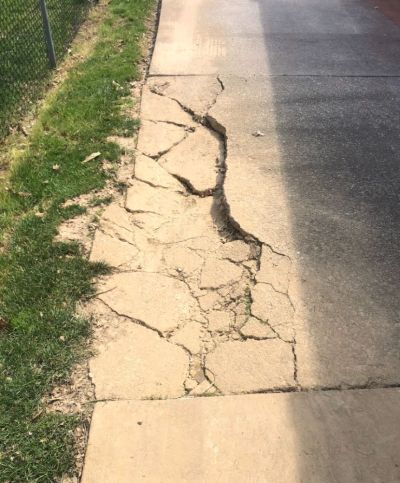
If you absolutely have to have heavy trucks, dumpsters, or other equipment on your driveway or other concrete surfaces, make sure you check the areas for voids beforehand, as these voids can potentially collapse under the weight.
Poor Quality Concrete
Concrete requires a delicate mix of different materials in order to create a strong, durable surface that can last for decades. A bad batch of concrete can cause concrete to crack over time.
If some of the ingredients in the mixture are off, it can create a weaker product that doesn’t stand up to the wear and tear that concrete is put through outdoors, like freeze-thaw cycles, erosion, UV damage, and more.
Tree Roots
Trees with shallow root systems that are planted nearby concrete can grow underneath the slabs and cause them to lift, crack, and break apart.
These roots can continue to grow if left untreated, causing the cracking and breakage to worsen. For this reason, it’s crucial to take action against encroaching tree roots as soon as possible after noticing the problem.
If you do find yourself with tree roots causing your concrete to crack, you’ll need to cut back the roots and install a root barrier system to prevent them from growing back or remove the entire tree.
Depending on how bad the cracking and overall damage from the tree roots is, you may also need to consider replacing the affected slabs.
Cracks in Newly Poured Concrete
When concrete is poured, it is full of water. As the water evaporates and the concrete hardens, it causes the concrete to shrink.
This shrinkage can cause small cracks in the concrete to form, which can be frustrating after having spent a lot of time and money on new concrete. However, these small cracks are a normal and very common occurrence.
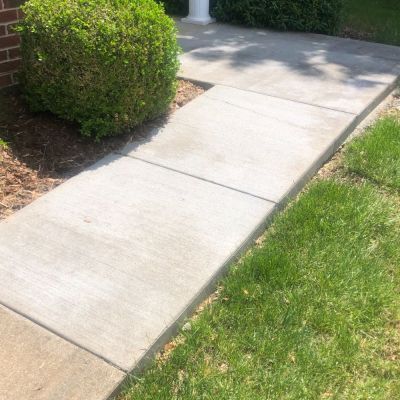
What to Do About Concrete Cracks
If you see a crack forming in your concrete slab, there are ways to prevent them from worsening. Taking care to find out what may be causing the cracking can help you find the right solution for your concrete.
For example, if a void under the concrete slab is what’s causing a crack, stabilizing that void with concrete leveling and then caulking the crack can help prevent the crack from getting worse or new cracks from forming.
Using this list as a guide can help you determine the causes of your concrete cracking, but contacting a professional will get you a better idea of why the cracks have formed and how best they can be repaired.
A-1 Concrete Leveling has helped countless homeowners repair and protect their concrete from further damage. If you’d like to see what professional crack repair can do for you, click the link below to request a free onsite estimate!
Want to know more? Check out these topics from our online learning center, called Concrete Academy:
Sarah Etler joined A-1 Concrete Leveling after receiving her Bachelor of Arts degree in English from Northern Kentucky University. As A-1's Content Marketing Manager, she works closely with industry experts to produce content that will best answer questions related to concrete repair and maintenance practices. Sarah loves living a life full of discovery and is excited every day to see what new things she can learn and share with those around her.
Topics: